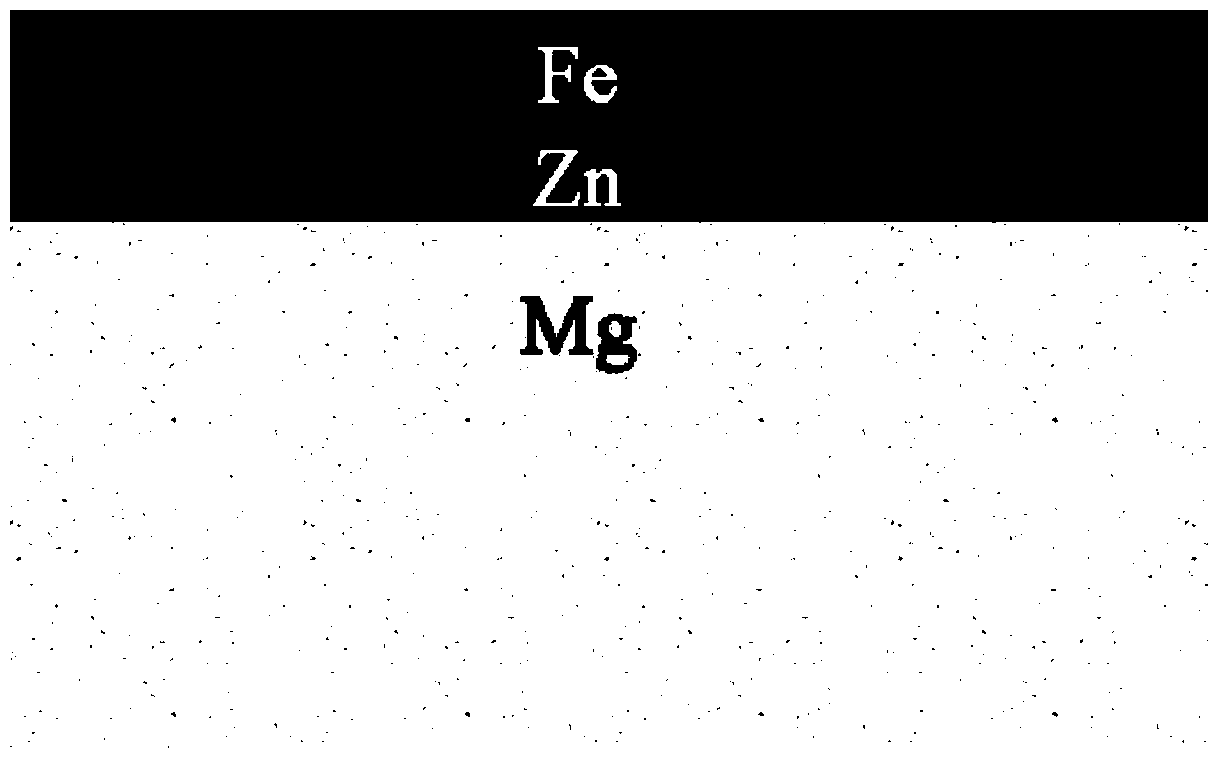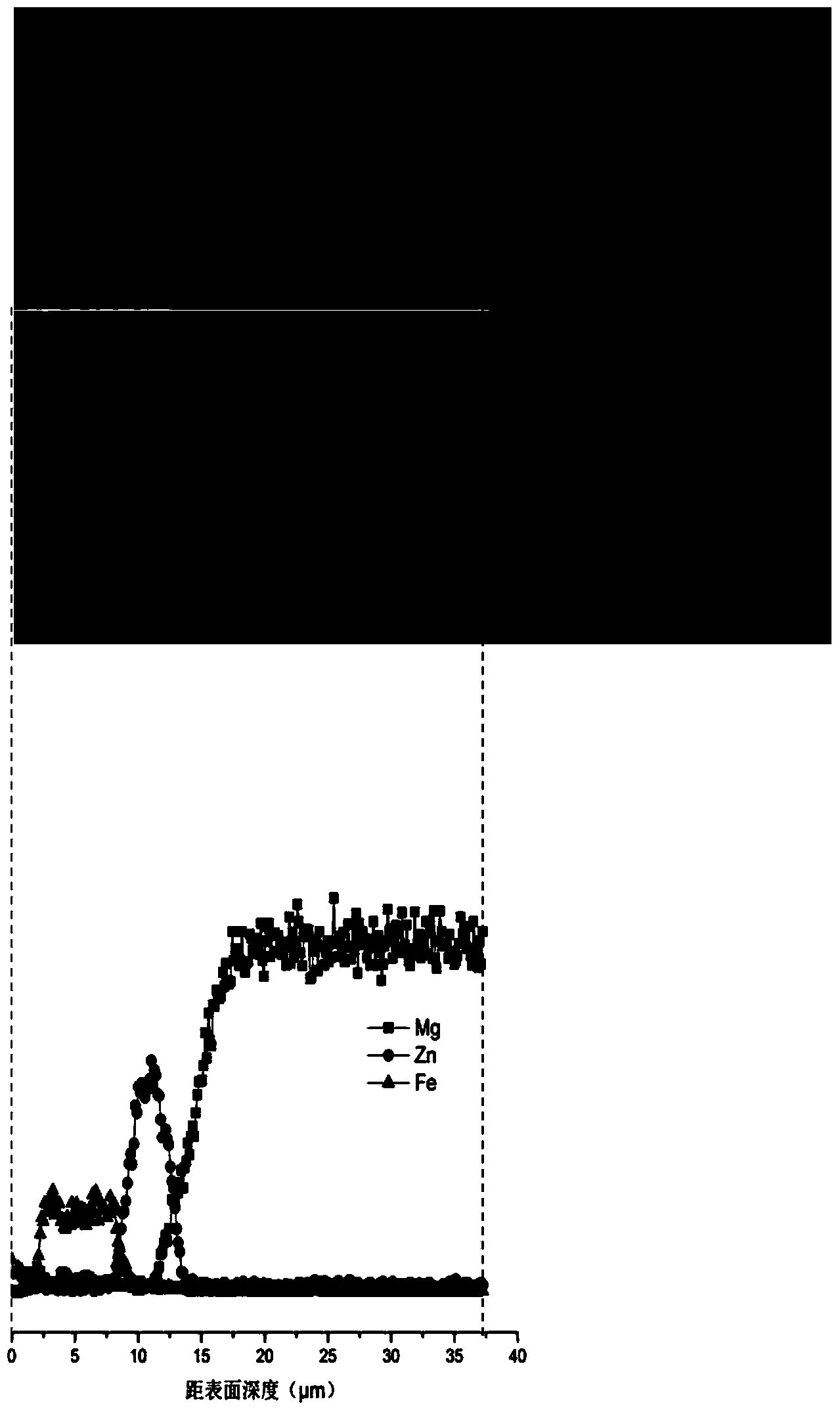Degradable iron, zinc and magnesium-based gradient composite material based on biological bone healing and preparation thereof
A composite material and bone healing technology, applied in the fields of medical science, chemical instruments and methods, layered products, etc., can solve the problem of reducing the corrosion rate of magnesium-based materials, unable to adapt to the continuous changes in mechanical properties, and unable to independently complete the biological bone healing. and other problems, to achieve the effect of dense combination and reliable, convenient and quick adjustment
- Summary
- Abstract
- Description
- Claims
- Application Information
AI Technical Summary
Problems solved by technology
Method used
Image
Examples
Embodiment 1
[0033] The rat model is used, and the thickness of each gradient layer of the material is designed according to the bone healing process of the rat. At the initial stage of implantation, materials with high elastic modulus and relatively slow degradation are required to ensure strong fixation, which is conducive to the growth of bone tissue. After 5 weeks, if the fixation is strong again, problems such as bone resorption caused by stress shielding effect will occur, which will affect bone tissue. heal. Therefore, after 5 weeks of rigid fixation, 3 weeks of elastic fixation is required, and a material with a lower elastic modulus is required at this time. After 8 weeks, the bone tissue is generally repaired, and the implant material needs to be rapidly degraded. Starting from the mechanical performance requirements of biological bone healing, combined with the respective advantages of iron, zinc and magnesium materials, a new type of degradable iron-zinc-magnesium-based gradie...
Embodiment 2
[0045] Taking the femur fracture in a 10-year-old child as an example, the thickness of each gradient layer of the material is designed according to the bone healing process of the child. At the initial stage of implantation, materials with high elastic modulus and relatively slow degradation are required to ensure strong fixation, which is conducive to the growth of bone tissue. After 3 weeks, if the fixation is strong again, problems such as bone resorption caused by stress shielding effect will occur, which will affect bone tissue. heal. Therefore, after 7 weeks of strong fixation, 3 weeks of elastic fixation is required, and a material with a lower elastic modulus is required at this time. After 7 weeks, the bone tissue is generally repaired, and the implant material needs to be rapidly degraded. Starting from the mechanical performance requirements of biological bone healing, combined with the respective advantages of iron, zinc, and magnesium materials, a new type of de...
PUM
| Property | Measurement | Unit |
|---|---|---|
| Thickness | aaaaa | aaaaa |
Abstract
Description
Claims
Application Information
 Login to View More
Login to View More - R&D
- Intellectual Property
- Life Sciences
- Materials
- Tech Scout
- Unparalleled Data Quality
- Higher Quality Content
- 60% Fewer Hallucinations
Browse by: Latest US Patents, China's latest patents, Technical Efficacy Thesaurus, Application Domain, Technology Topic, Popular Technical Reports.
© 2025 PatSnap. All rights reserved.Legal|Privacy policy|Modern Slavery Act Transparency Statement|Sitemap|About US| Contact US: help@patsnap.com



